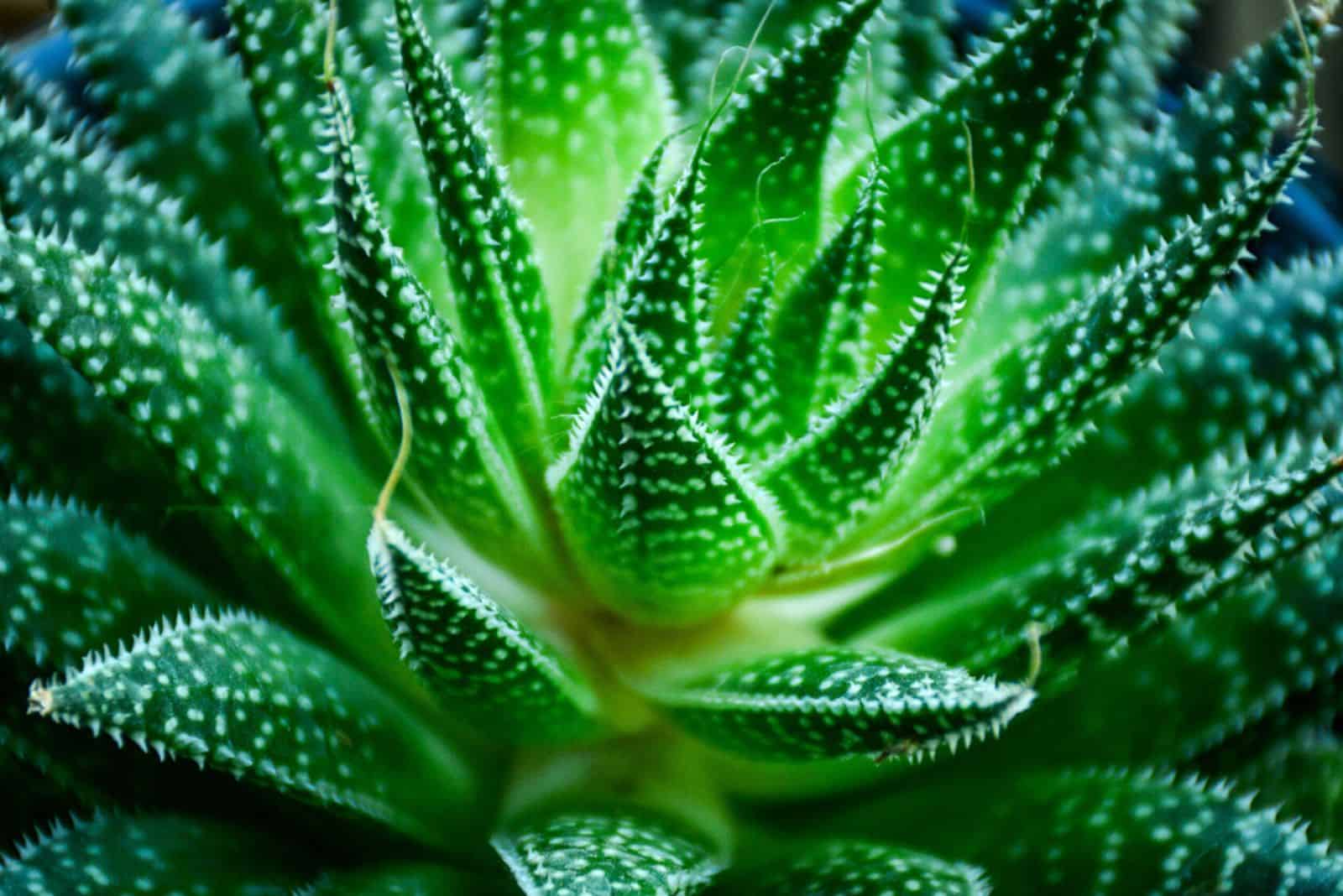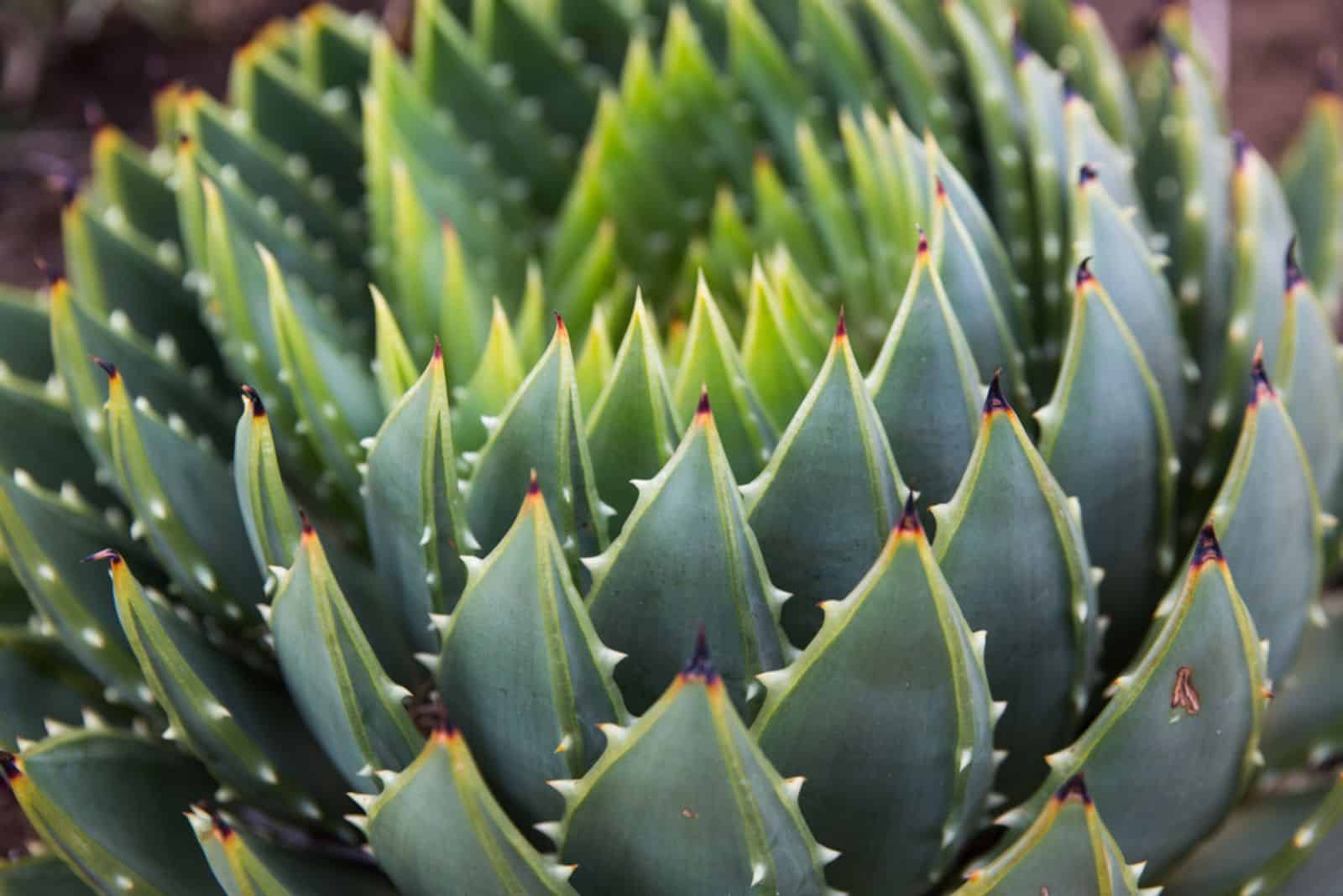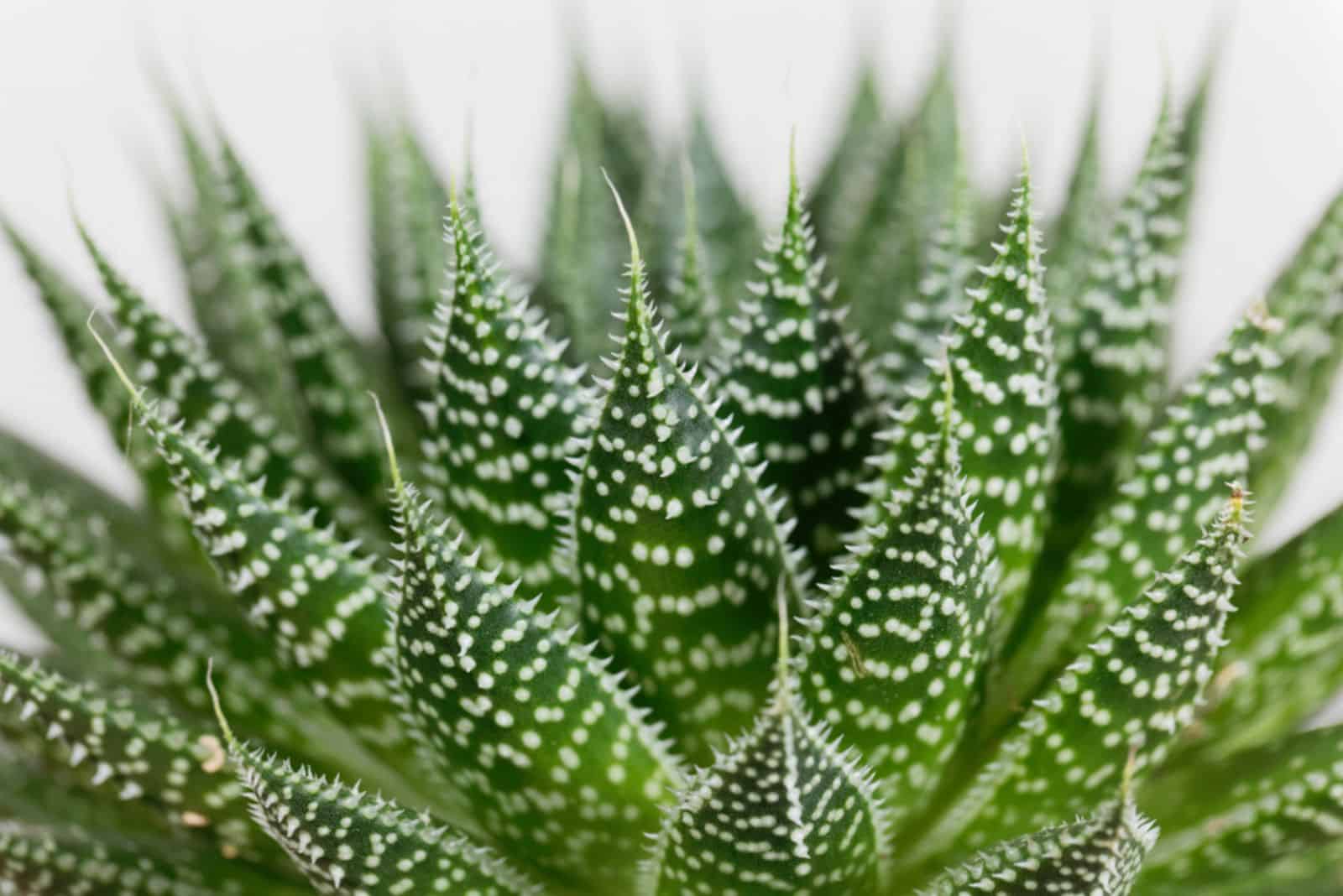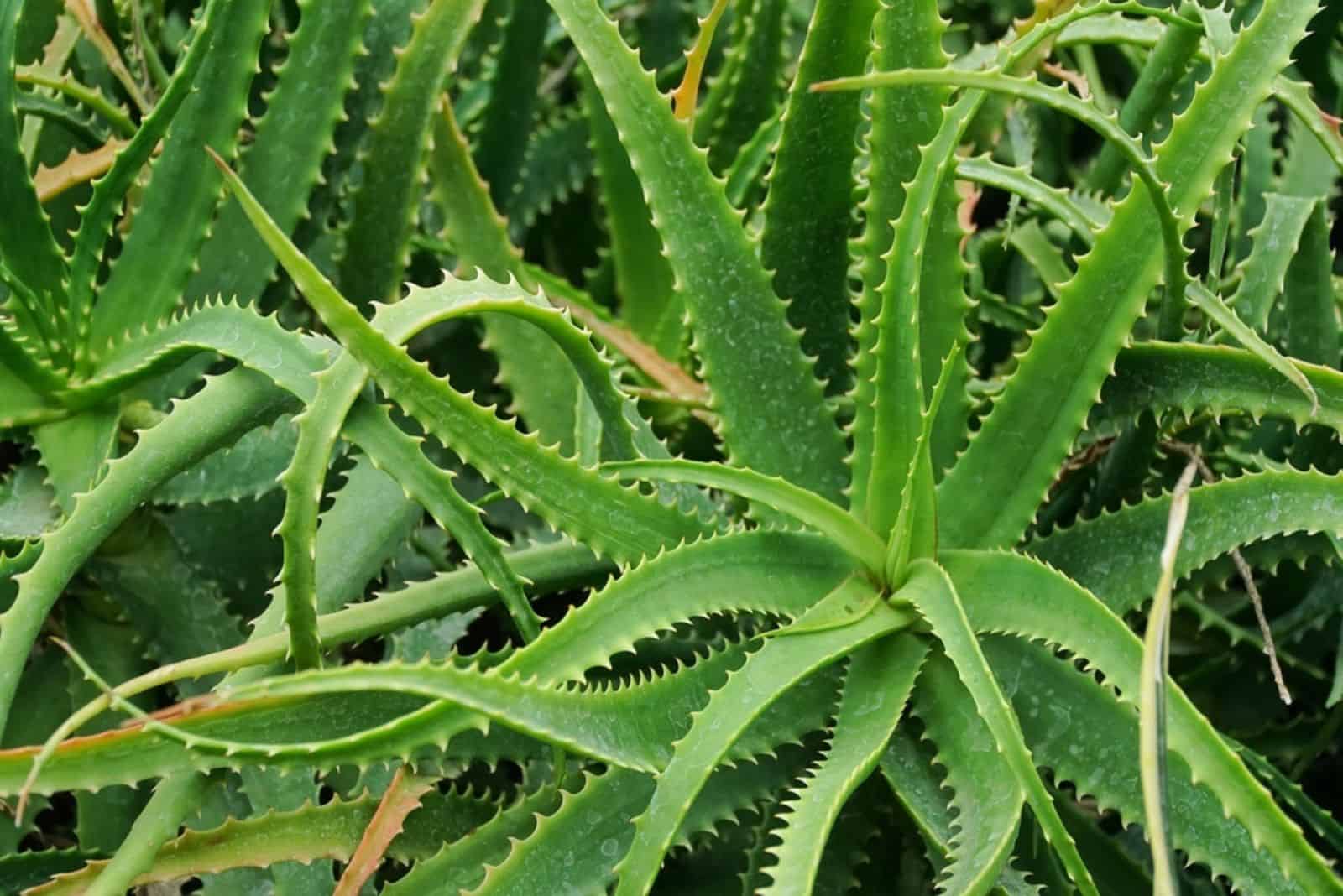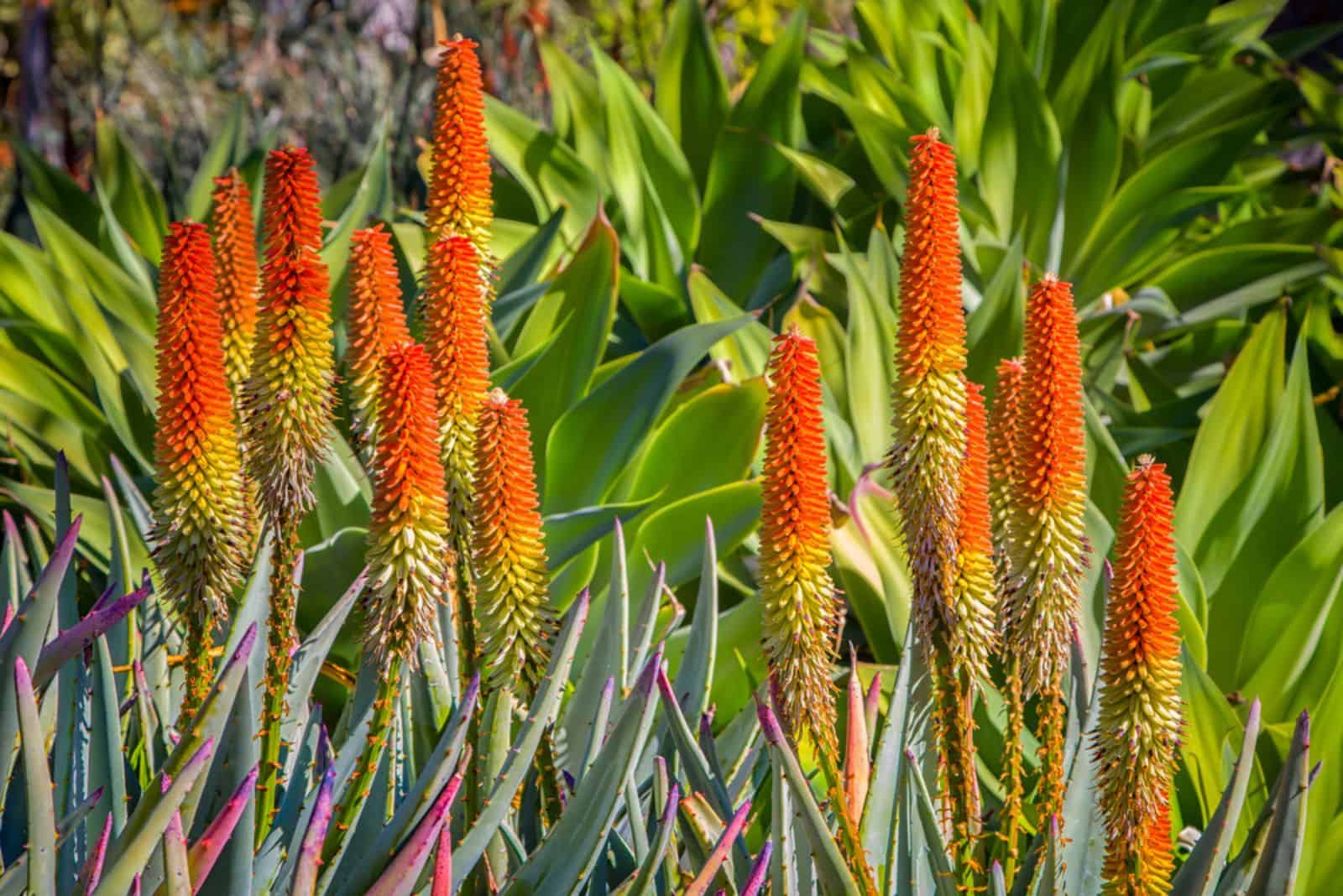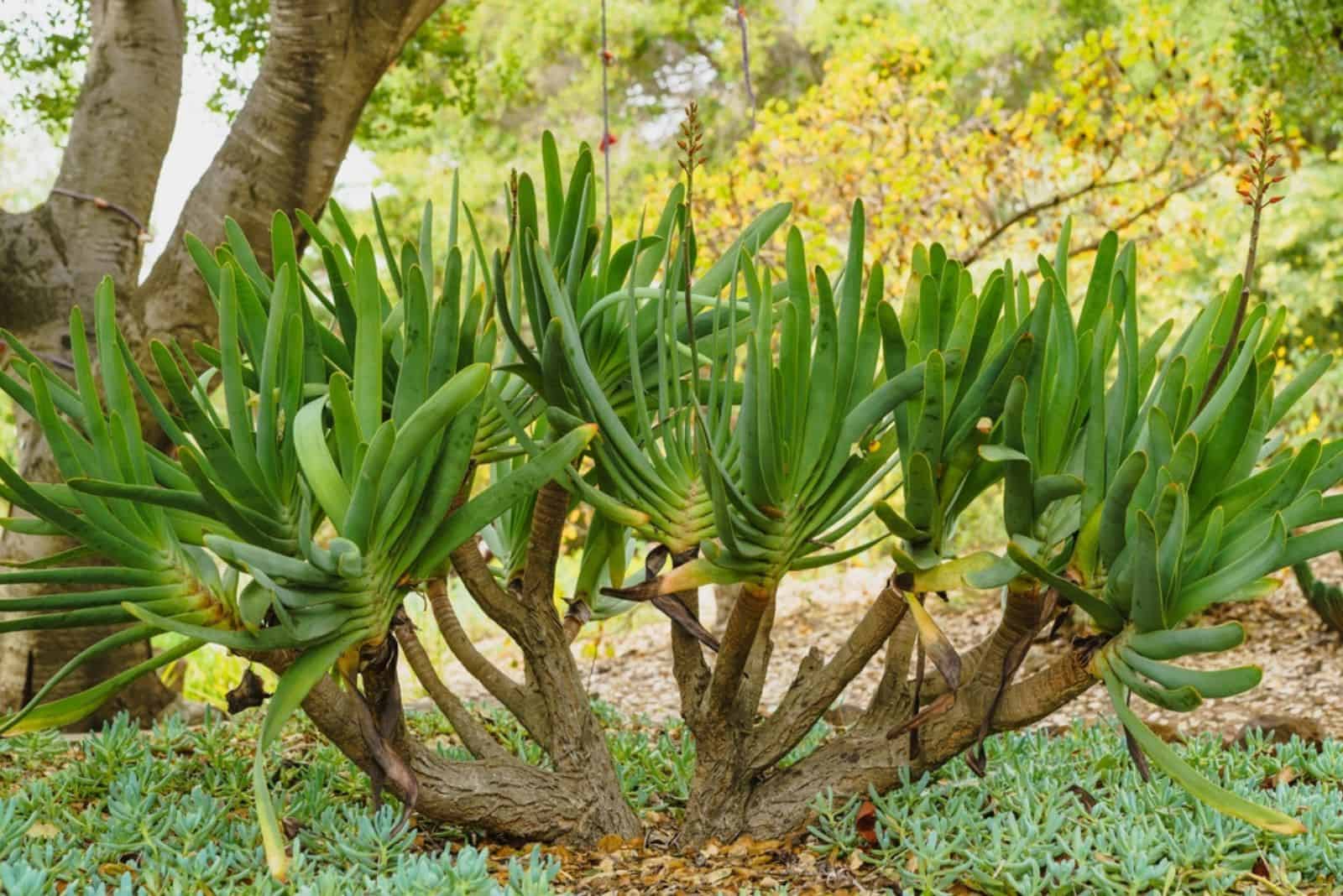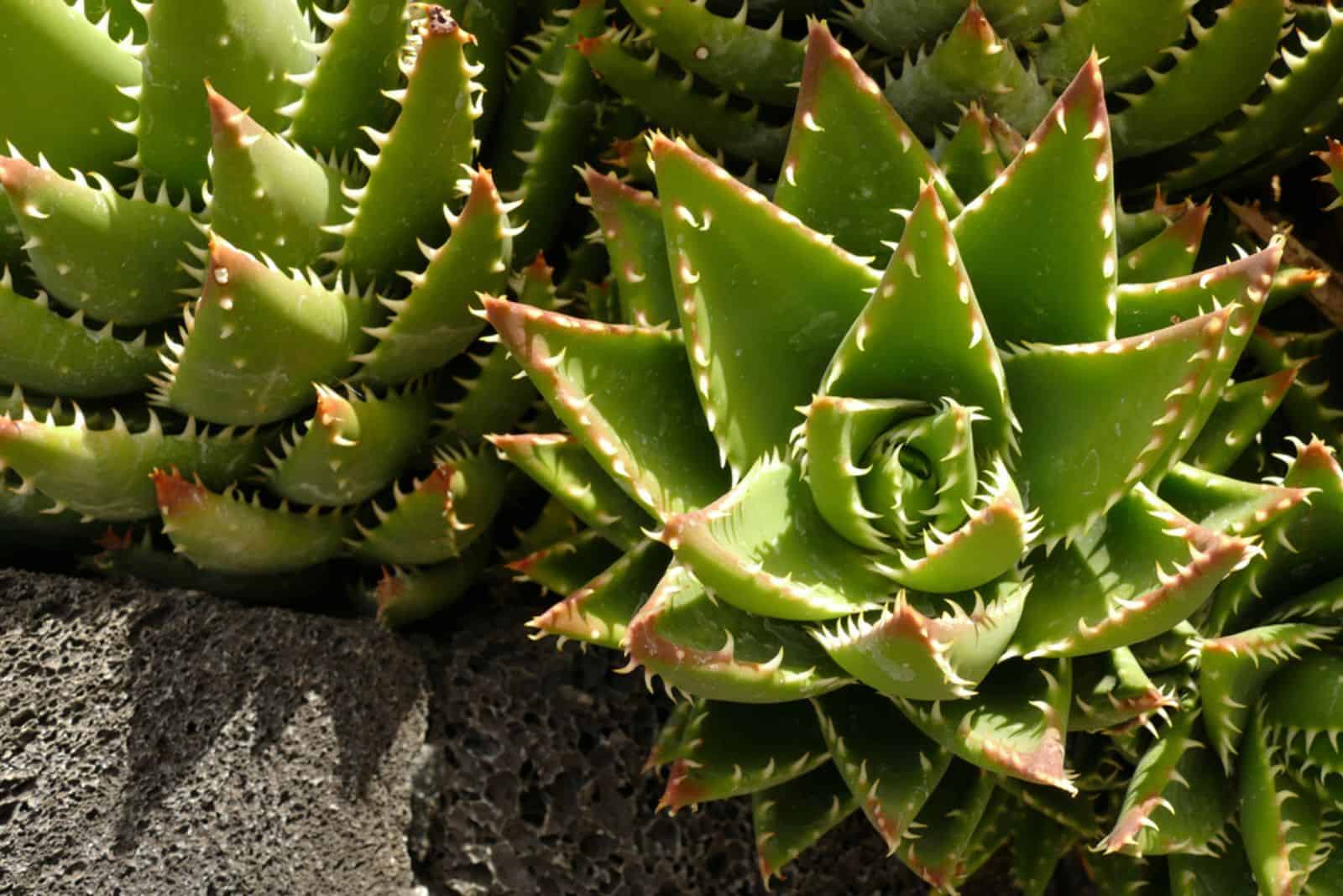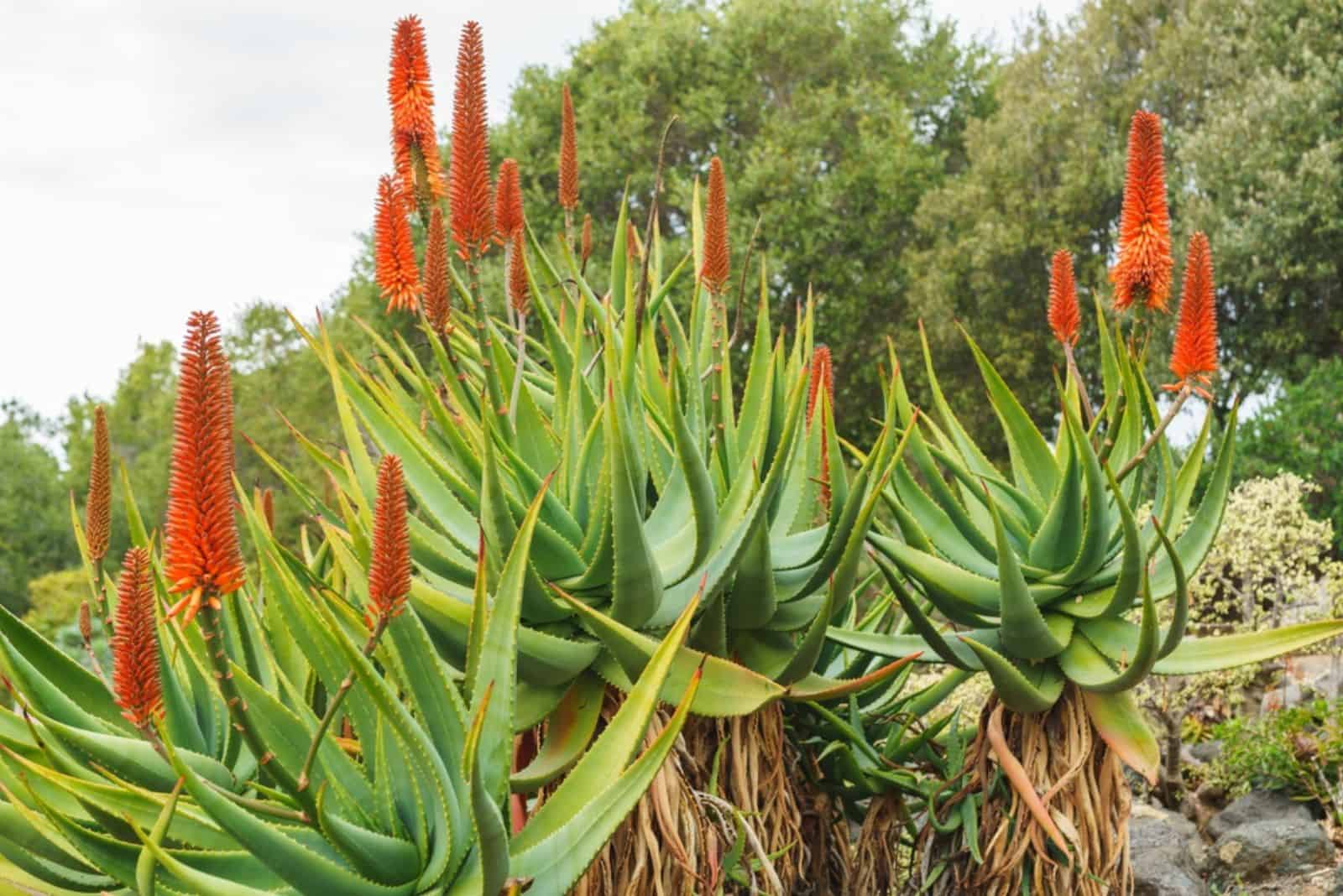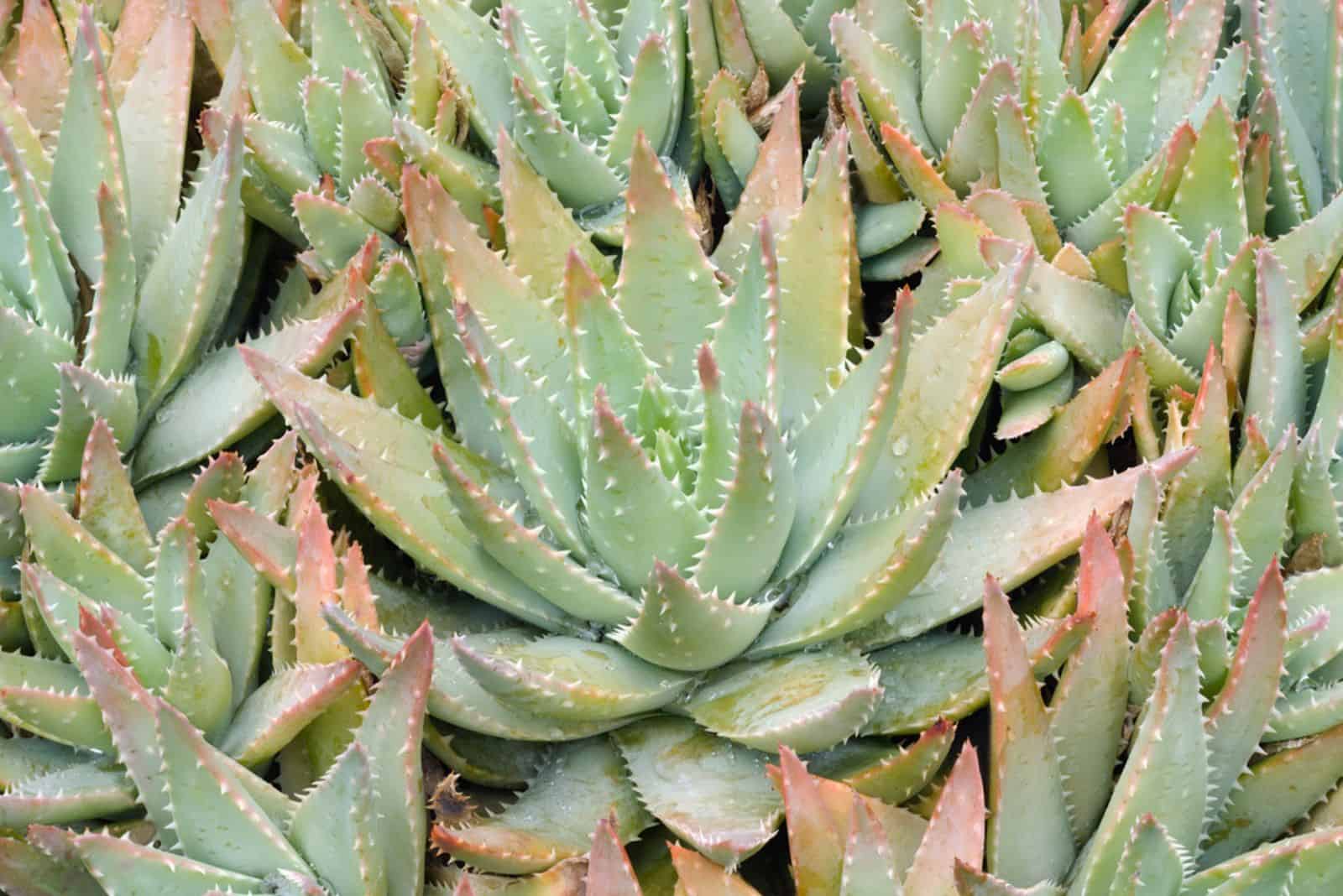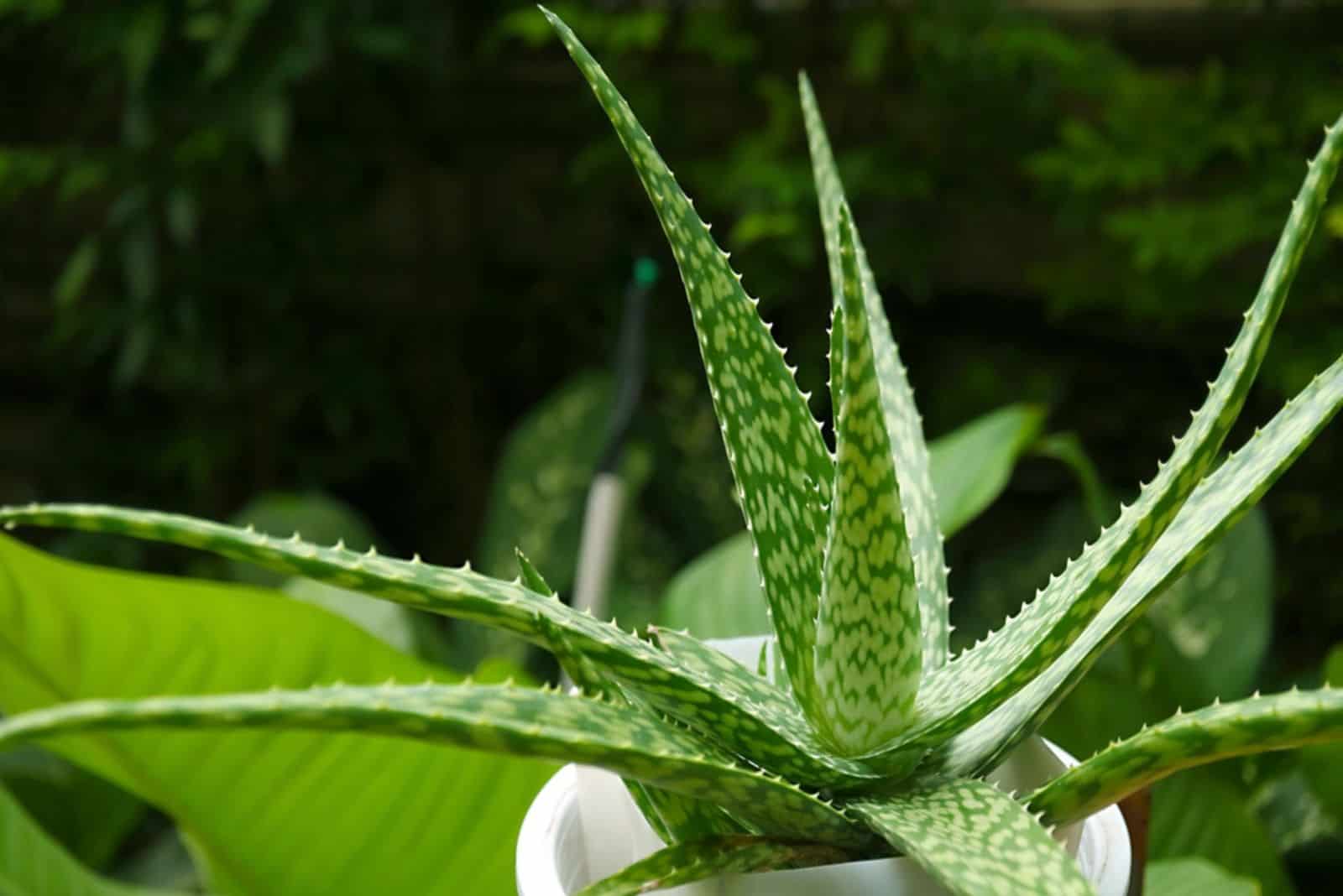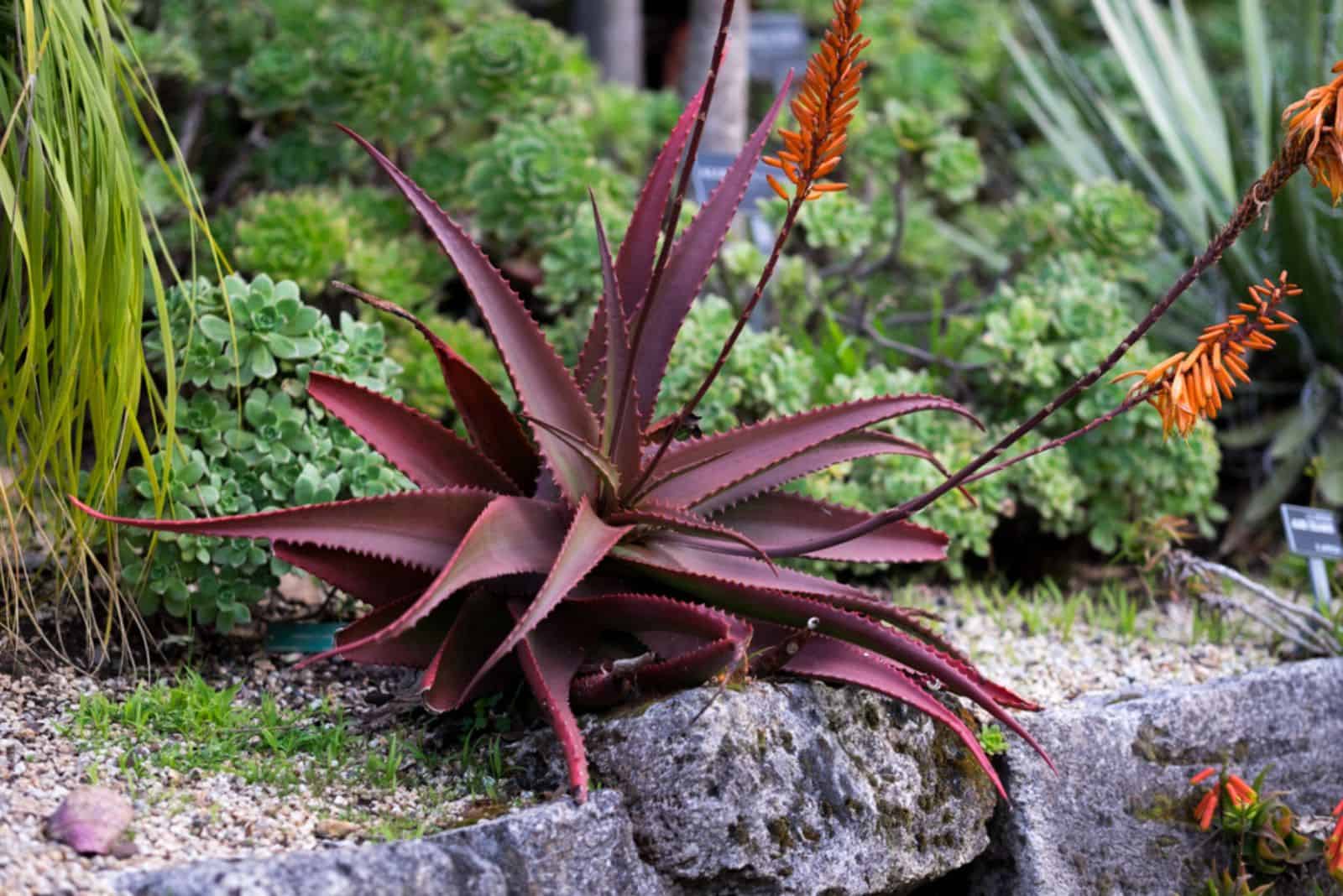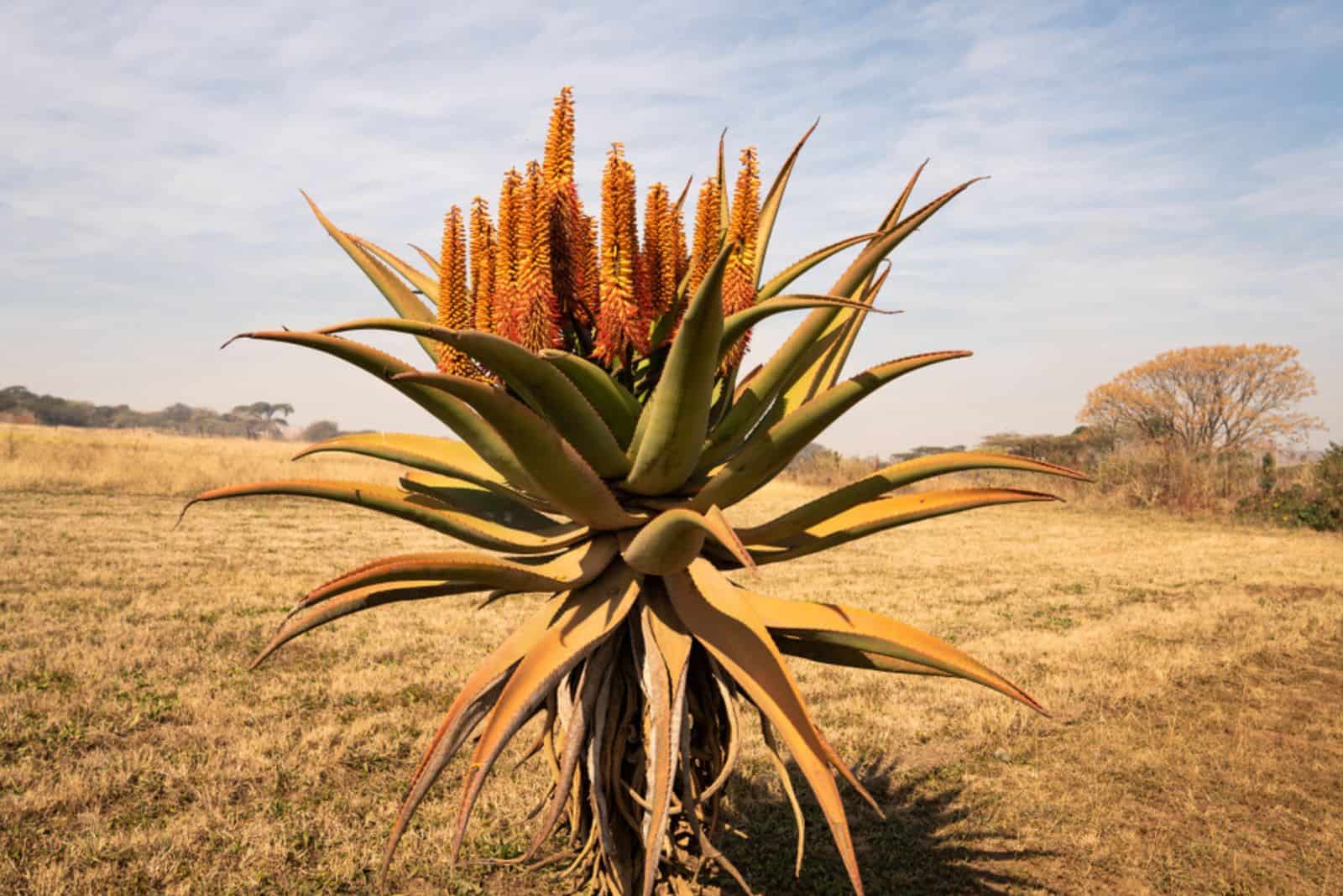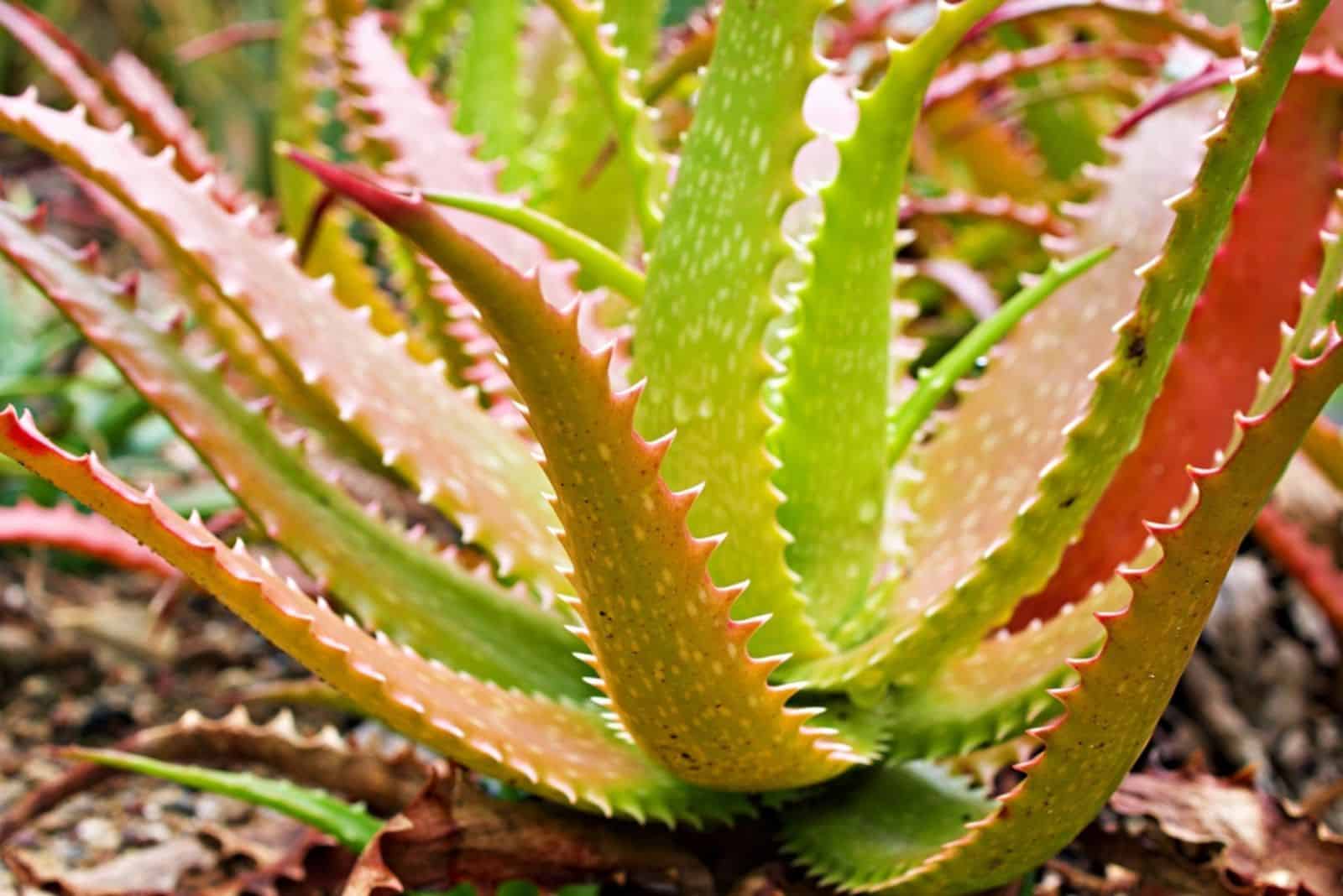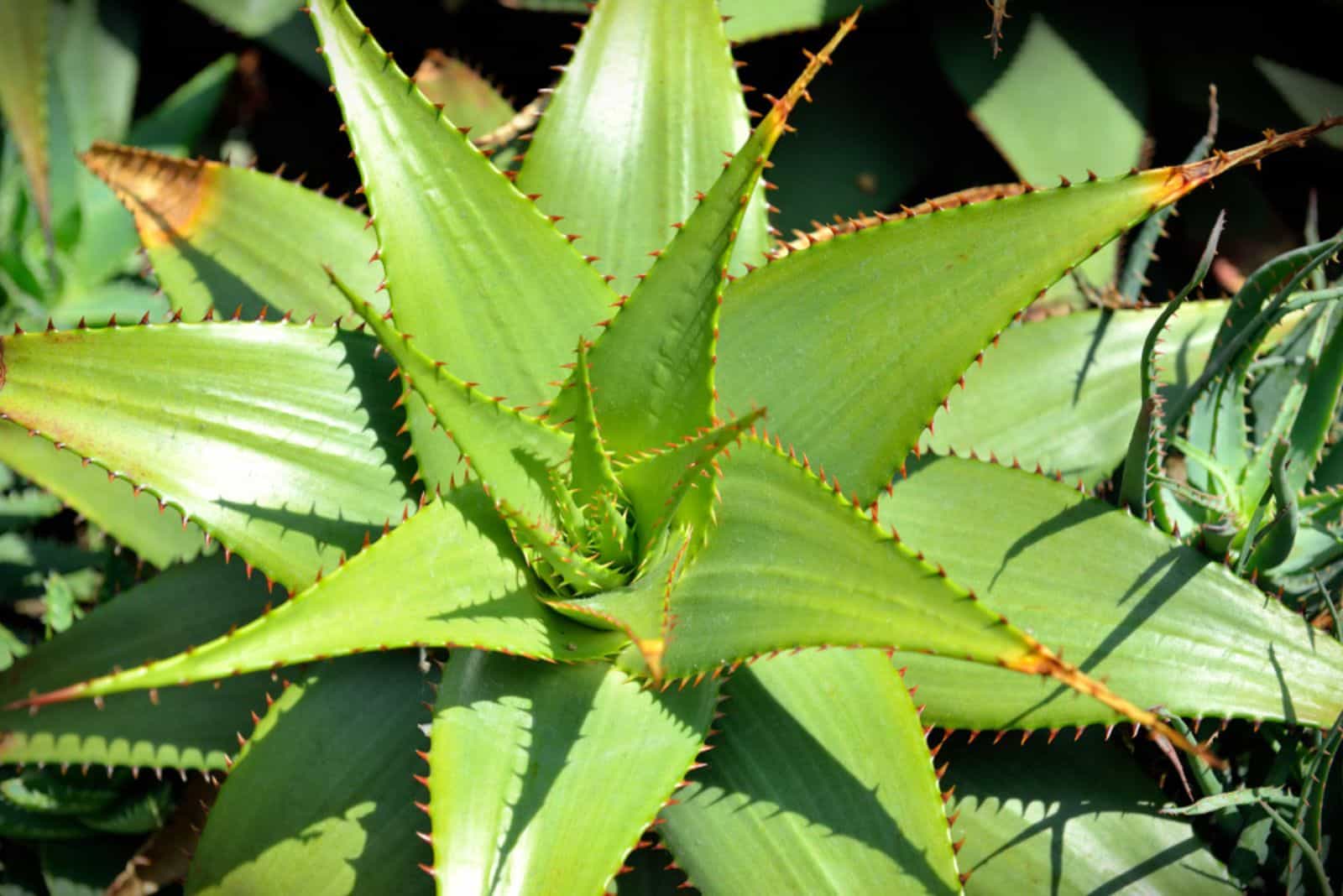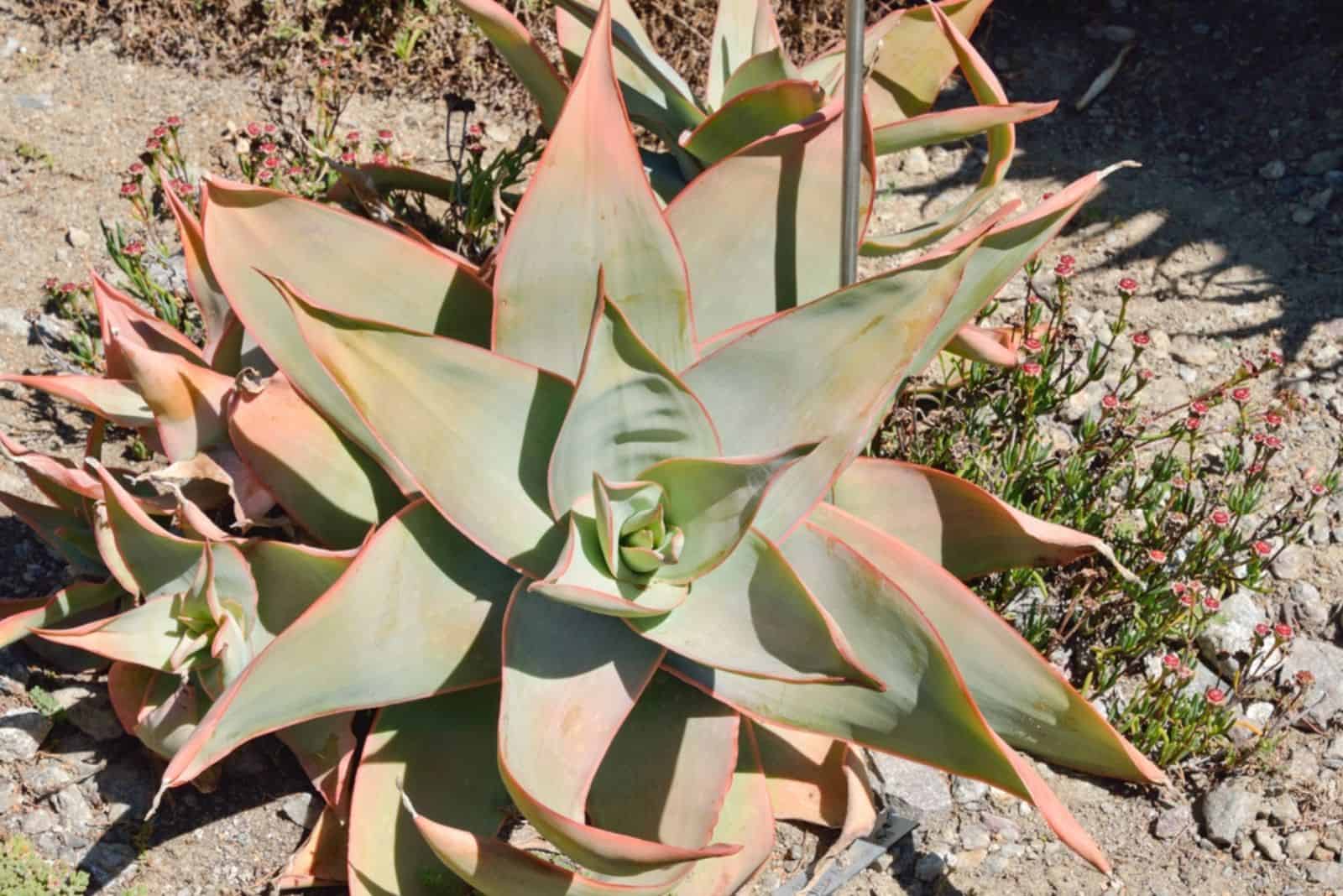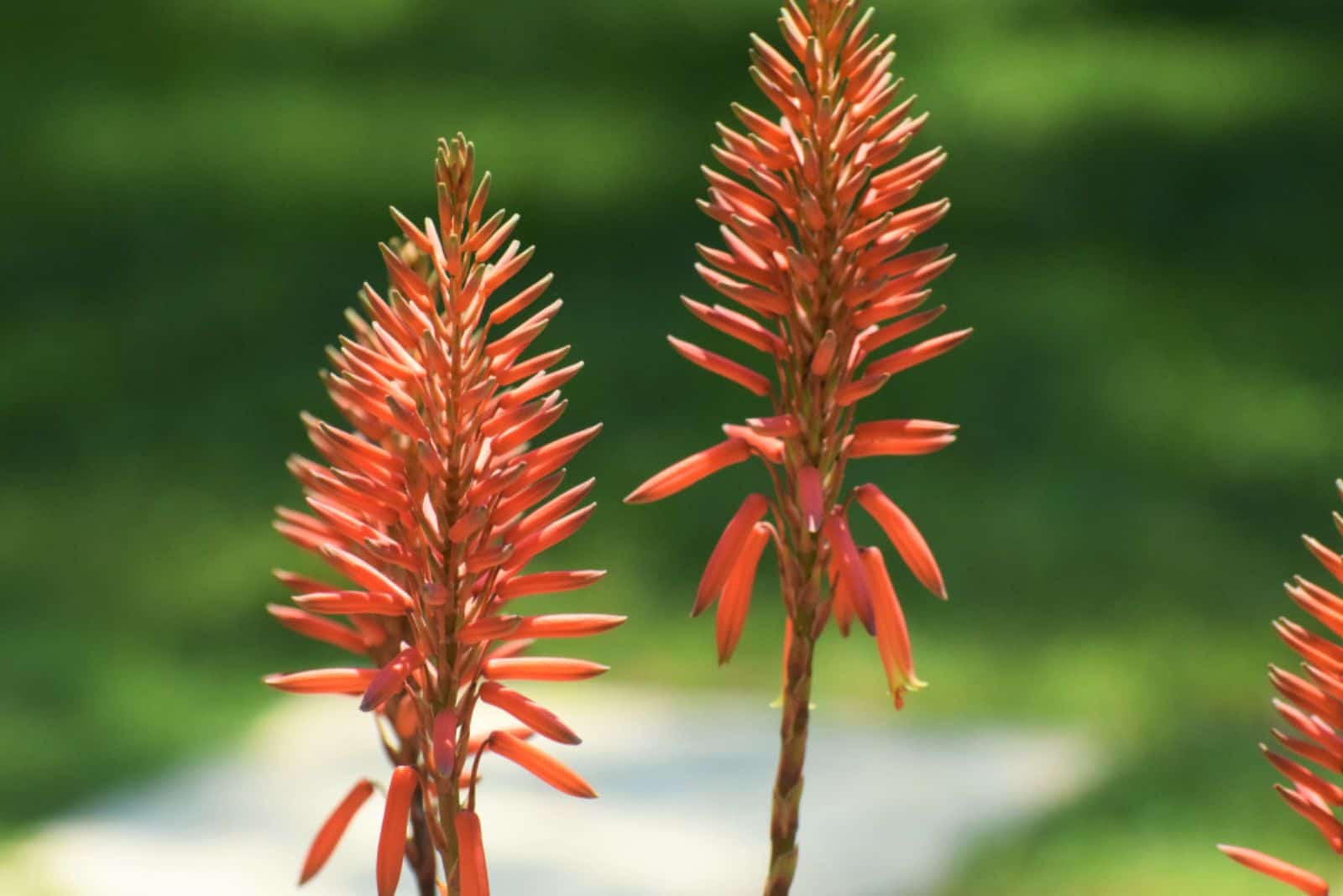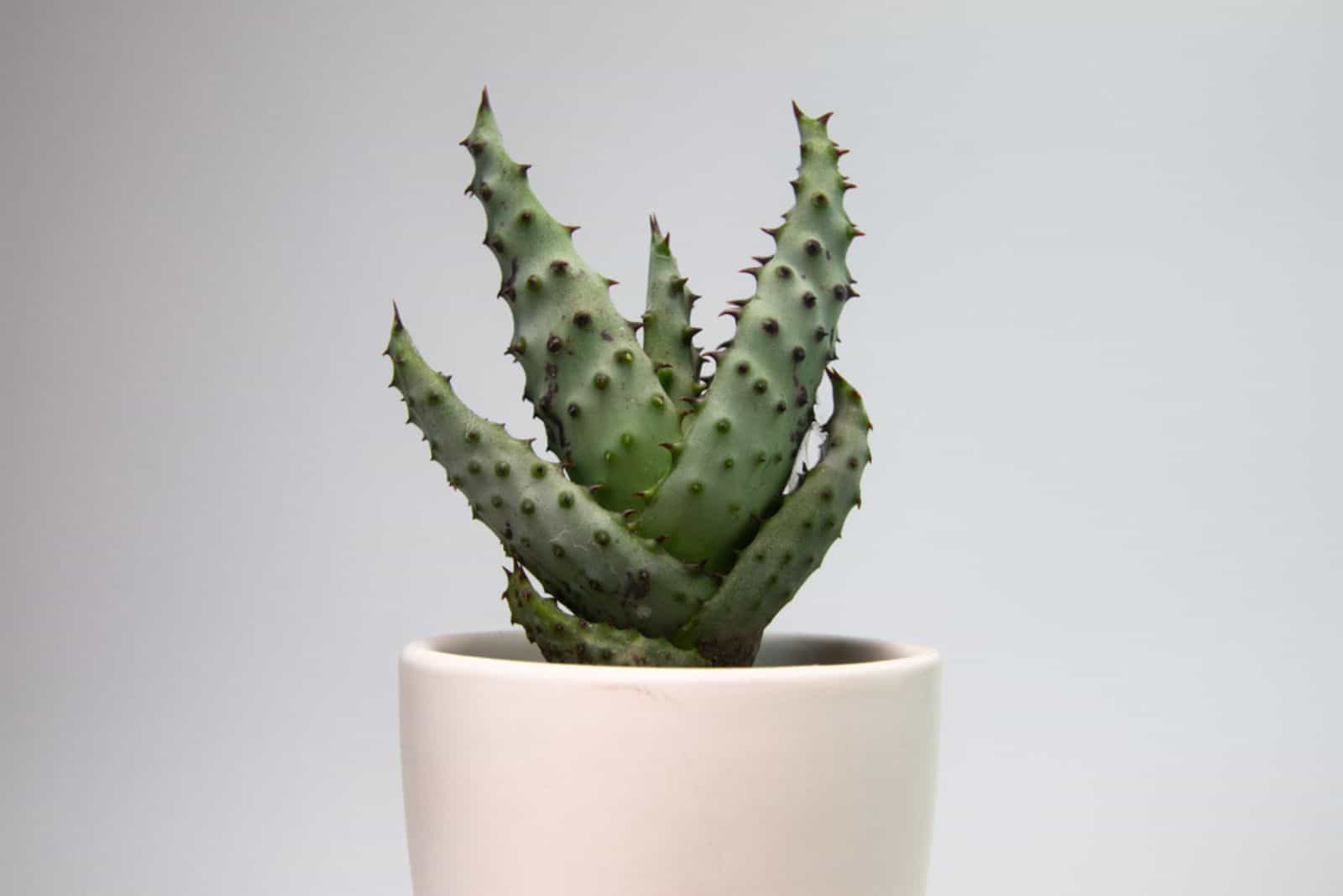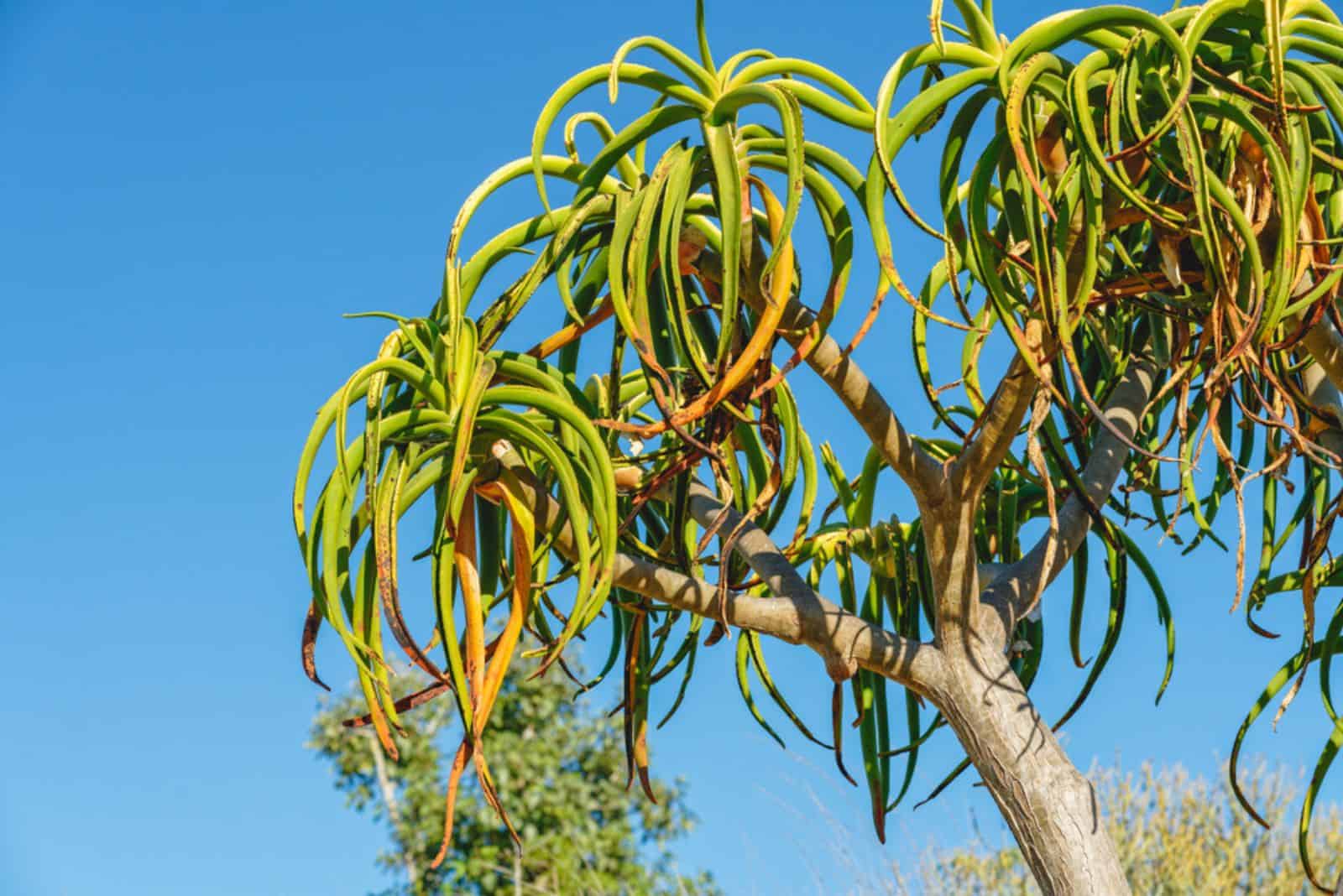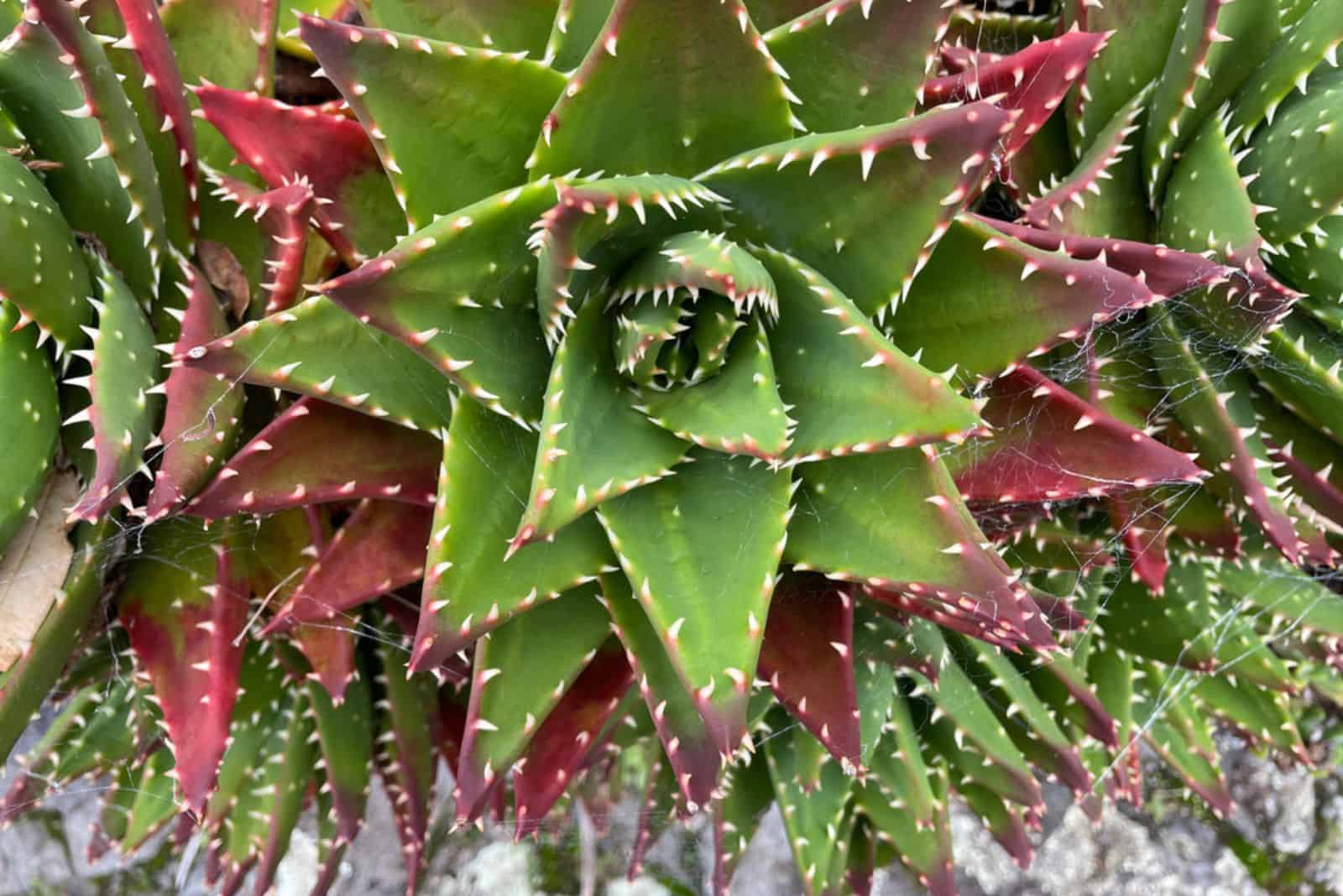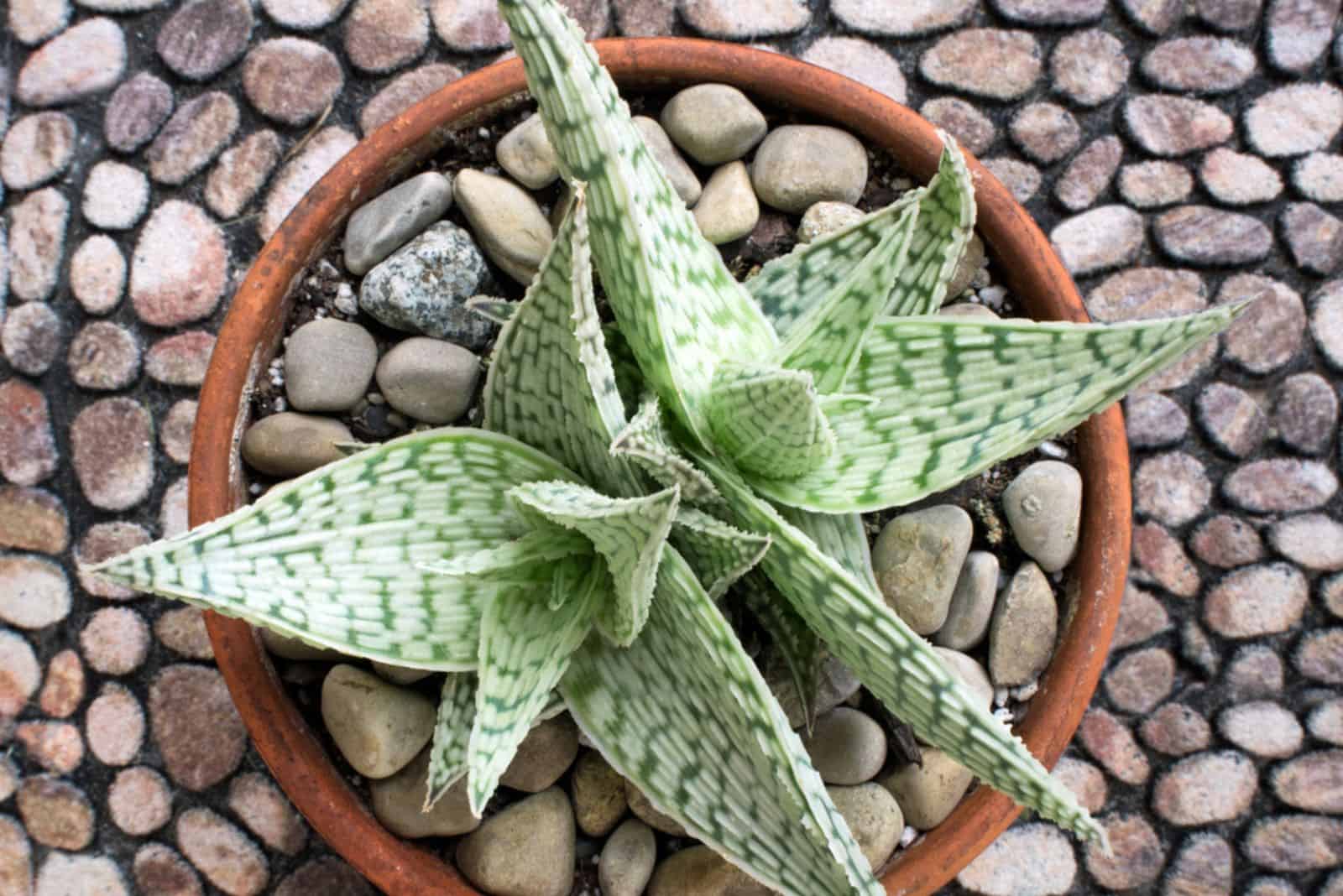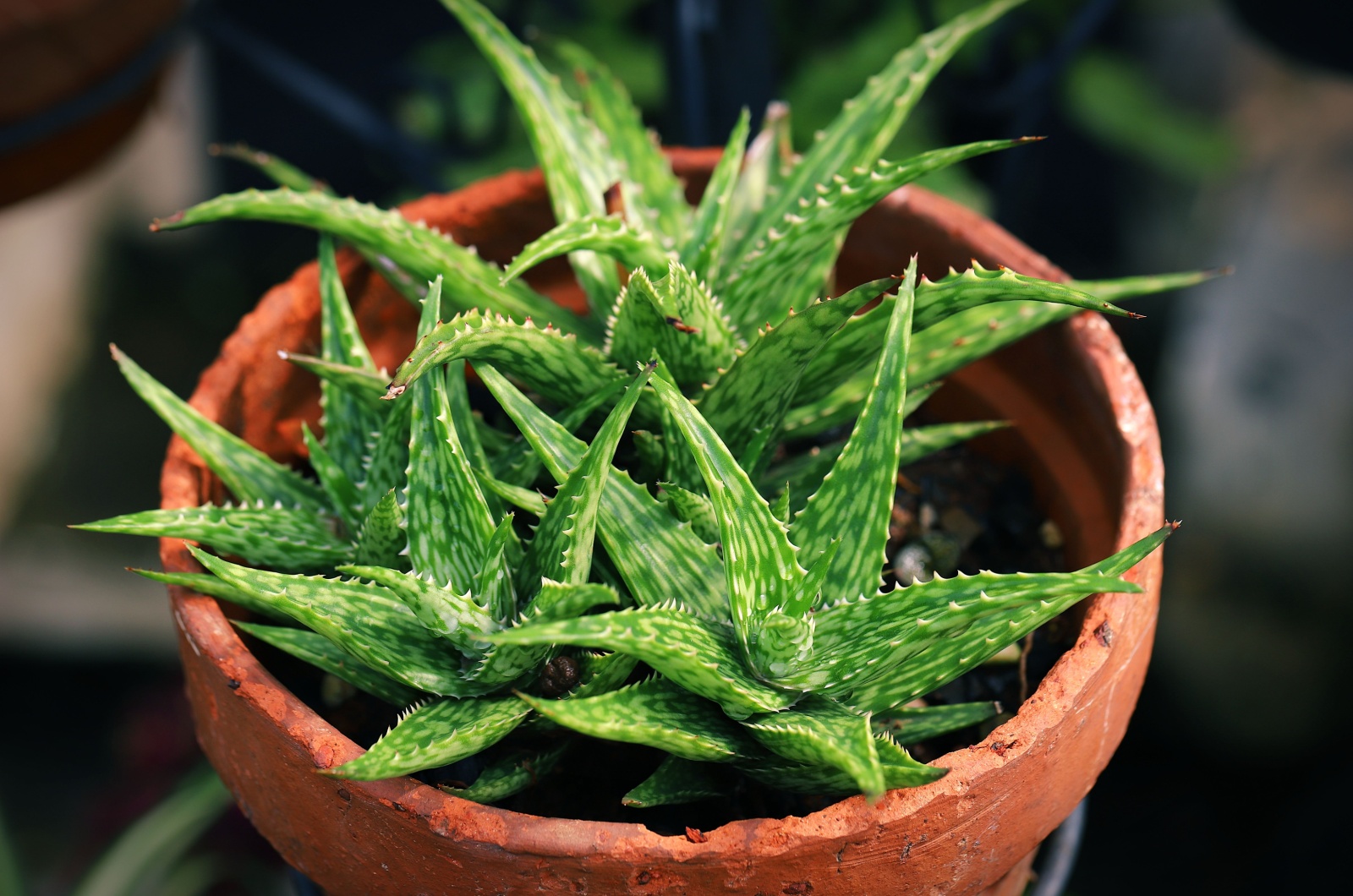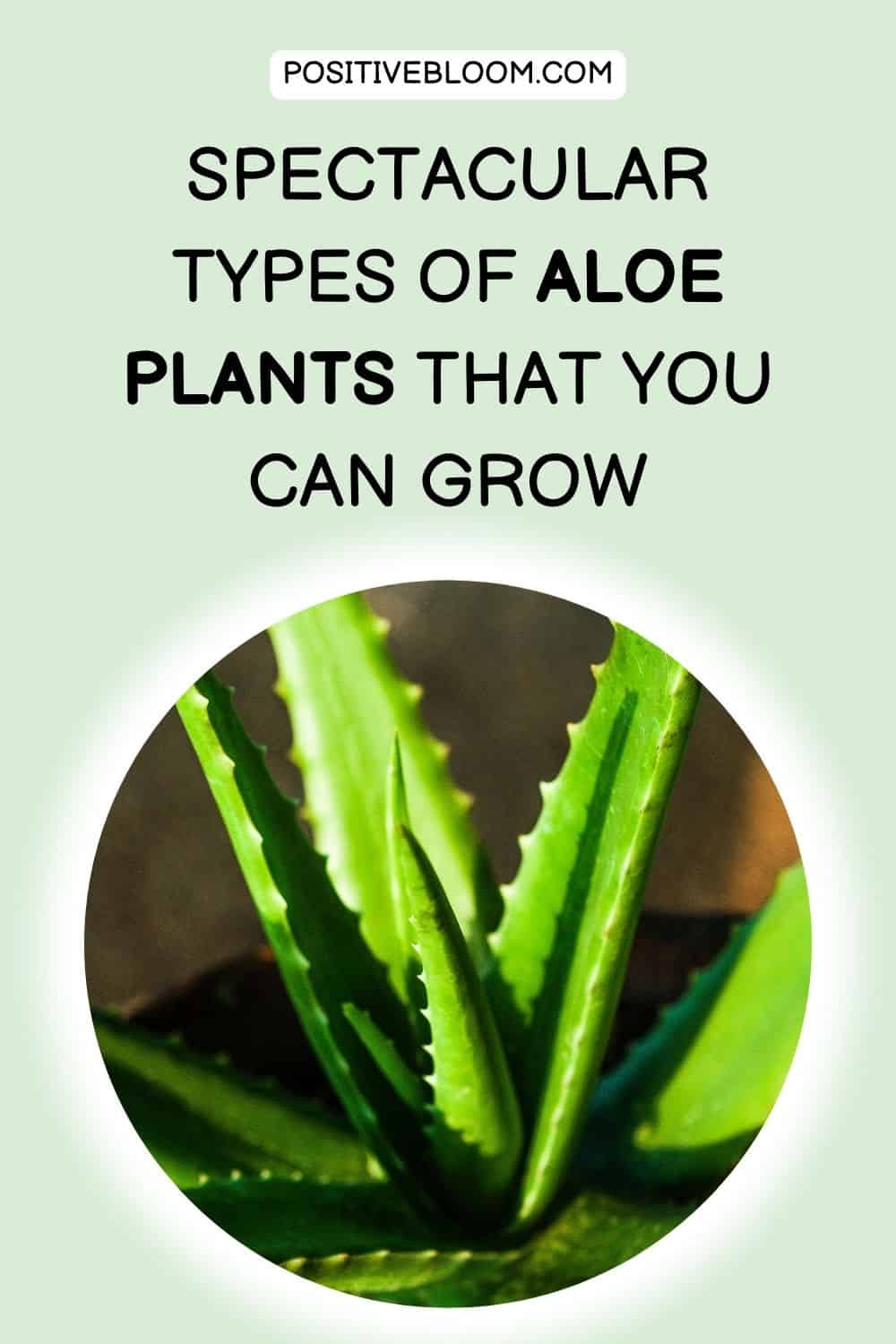You have probably heard of the Aloe vera plant, but did you know that there are over 300 different types of Aloe plants out there?
That’s right, and each of them is special in its own way.
They have unique fleshy leaves that usually grow in symmetric or asymmetric patterns, and they look absolutely great for any type of home decor. What is also great is that they have many health benefits and can also be used for skin care and cosmetics.
So, if you are planning to grow a little Aloe empire, then you should definitely check out all the lovely species of Aloe in this article!
So, without further ado, let’s dive in!
1. Aloe Polyphylla
The spiral Aloe, also known as the Aloe polyphylla, is definitely one of the prettiest Aloe plants. The leaves of this plant are arranged in a spiral, hence the nickname spiral Aloe. They are small, egg-shaped, and usually arranged in five rows that all spiral in the same direction.
Mature plants can produce lovely rosettes, though this cannot be seen with the younger plants. However, these succulent plants will only bloom in perfect conditions and they produce beautiful salmon-pink flowers.
Bear in mind that the sap of these plants is extremely poisonous — if you want to grow an aloe for medical uses, then you shouldn’t pick the spiral Aloe. This plant is primarily cultivated for ornamental purposes.
2. Aloe Aristata
Torch plant, Lace Aloe, and Guinea-fowl Aloe are all nicknames for the Aloe aristata!
This dwarf variety produces bright green leaves that turn dark green when grown in full sun. Their unique leaves are 15 cm long and they have tiny white teeth all along the edges. These plants are all about leaves — they don’t have stems!
The Aloe aristata produces magnificent red-orange flowers that start growing in late spring. You can keep it in partial shade, but it can also tolerate full sun.
3. Aloe Arborescens
This Aloe also goes by many different names, including the Krantz Aloe, Torch Aloe, and Candelabra Aloe. Its name actually means tree-like because this plant can reach up to the size of a tree.
This plant has a relatively long life span and it can grow up to 2 meters tall!
From the center of each leaf rosette, the Krantz Aloe develops a stem from which lovely, scarlet inflorescences appear. Similarly to Aloe vera, the Krantz aloe is highly resistant to brief periods of frost and has some therapeutic benefits.
However, it is recommended that you grow it primarily for its decorative features, as it can be toxic if not dealt with properly.
This famous Aloe variety is called “Miller”, and it produces bright red flowers. This plant is perfect for rock gardens.
4. Aloe Vera
Aloe Vera is a succulent with long, luscious green leaves that look particularly lovely on a table. The other name for Aloe vera is Aloe barbadensis miller, though it is not commonly used. It is native to the Arabian Peninsula.
The young, spiky green leaves are either pure green or sporadically gray-green, and have white specks on them.
However, as the plant gets older, these white flecks disappear and Aloe vera takes on its unique look. While the majority of cultivars are stemless, some do have short stems with white flecks on them.
Aloe vera plants are evergreen, so they’ll spruce up your living area all year round.
Squeezing the gel from the aloe vera leaves is an excellent approach to treating cuts and bruises, and the advantages for your health don’t end there!
Aloe vera plants remove pollutants like benzene and aldehydes while also converting CO2 to oxygen at night, which is something that very few plant lovers are aware of.
Read also: Keep It Fresh With Some Of The Most Oxygen-producing Plants
5. Aloe Ferox
Red Aloe, Tap Aloe, Bitter Aloe, and Cape Aloe — these are all the names commonly used for the famous Aloe Ferox.
Native to South Africa, the Aloe ferox is present across the Eastern Cape Province, in KwaZulu-Natal to the east, in southern Lesotho, in the northern Free State, and from Overberg DC and Swellendam in the Western Cape (hence the numerous names!).
The leaves are usually blue-green and have brown thorns along the edges. The large stalks of the plant are covered in tubular flowers that can range in color from red to orange to yellow and everything in between! Rosettes cover the broad stem of the plant.
The Aloe ferox can thrive in grassy areas of Africa, but it typically grows in large numbers on rocky ground. This plant’s ability to adapt to local weather conditions and change its appearance makes it unique.
It is hard to distinguish Aloe vera and Aloe ferox from one another since they look almost the same, but there are hidden details that you can look for to help you differentiate between them,
6. Aloe Plicatilis
Aloe plicatilis, also known as the Fan Aloe and Kumara plicatilis, is the tallest Aloe plant in Southern Africa. It can grow up to 5 feet tall!
The plant’s multiple pseudo-stems spread as they grow and look like a fan, hence the nickname Fan Aloe. The blue-green leaves are usually toothless with orange edges, and the flower stems can reach a length of 50 cm and bear beautiful red flowers.
These lovely flowers attract birds as they are full of nectar. However, their sap is extremely poisonous!
7. Aloe Juvenna
This variety of Aloe has unique triangular leaves with teeth in the seams, which is why the plant is also called the Tiger tooth aloe. The leaves have a reddish-brown color, and they are covered in white spots.
This plant is native to Kenya and it can grow about 12 inches in length. It is a low-maintenance plant that is also a slow grower, so you won’t have to worry about repotting constantly.
The flowers have very long stems and are bright red with a yellow-green mouth. Though it is not poisonous for humans, it can be harmful to dogs and cats.
8. Aloe Marlothii
The lovely Aloe marlothii, also called the Mountain Aloe, is definitely one of the prettiest plants out there!
It can be widely seen all over South Africa, including Swaziland, Malawi, Zimbabwe, Botswana, and Mozambique. The plant produces fleshy and wide, light green leaves with pointy tips. Reddish-brown spines can be found on the lower and top surfaces of these leaves, and also around the edges.
This plant can reach up to 8 to 10 feet tall, and it is also considered one of the tallest types of Aloe plants. The Zulu actually used this plant for its healing properties to treat stomach problems and ringworms.
The Mountain Aloe is also one of the easiest plants to grow — all you have to do is provide them with well-draining soil, water them during the growing season, and keep them in warm temperatures. Seeds, cuttings, or offsets from established aloe plants can all be used for propagation.
9. Aloe Brevifolia
Otherwise known as the Short-leaf Aloe, the Aloe brevifolia is a slow-growing succulent that has amazing medicinal properties and is used as a natural laxative to get rid of constipation.
However, they are primarily grown for their beautiful cluster of leaves. It stays relatively small (grows about 4 inches tall) and it can be grown indoors, in rock gardens, as a groundcover, or in containers.
The plant thrives in light shade and produces pale green leaves that, when exposed to full sunlight, turn golden yellow and rosy pink. The plant also produces tubular, bright orange flowers and multiple suckers that eventually turn into rosettes.
It grows actively in the autumn and early spring, and goes dormant in winter and summer.
10. Aloe Maculata
Aloe Maculata, also known as the Soap Aloe, is an Aloe variety that produces rosettes of broad, triangular leaves. It got the nickname Soap Aloe because it produces a soapy lather in water.
This species is native to southern and eastern Africa. The leaves have a bright green to reddish color, and they have white spots all over the surface. It can be distinguished from other spotted Aloes by its evenly colored flowers and flat-topped inflorescences.
They produce orange-to-yellow flowers that look absolutely amazing in the garden!
What’s also great is that this plant is drought-tolerant and can grow in partial shade. However, it is very sensitive when it comes to temperature changes — they can be seriously hurt if the temperature drops below 32 degrees Fahrenheit.
11. Aloe Cameronii
Now, these are truly one-of-a-kind types of Aloe plants. The Aloe cameronii produces fleshy leaves that are completely red, which is why the plant is also called the Red Aloe. However, the leaves’ color can vary based on their conditions.
They start producing beautiful orange-red flowers in the late fall, and they can also grow about 4 feet high.
These are also low-maintenance plants that can grow in all sorts of climates — seriously, they can adapt to warm or cold temperatures or dry and humid environments. However, they thrive in full sun!
12. Aloe Africana
As the name suggests, the African Aloe is another Aloe plant that originates from South Africa. With its long and curvy bright green leaves with orange-reddish spikes along the edges, the entire plant looks exactly like an octopus’ tentacles!
They can definitely be used as centerpieces for any garden or room (but take into consideration that they are quite big). These plants can reach up to 8 feet tall and 4 feet wide.
The Aloe Africana thrives in USDA hardiness zones 9b to 11b, though they can adapt to different conditions. They start blooming during winter and spring, and they produce lovely yellow and orange flowers.
As you might assume, they can grow very well in full sun, but they can also adapt to partial shade. You should be careful you don’t end up overwatering the Aloe plant, though, because they don’t need as much.
13. Aloe Dorotheae
The Aloe dorotheae has magnificent leaves with reddish margins that look like a sunset, which is why this plant is also called the Sunset Aloe!
However, if they are overly exposed to the full sun, these leaves can turn completely red. This is the reason the Aloe dorotheae is one of the plants that you regularly see in gravel or rock gardens — the subtle pop of color just fits perfectly.
This plant also produces beautiful yellow tubular flowers, though they start blooming during the winter season. It thrives in USDA hardiness zones 9b to 11b.
14. Aloe Broomii
The Aloe broomii, also known as the Snake Aloe, is a small plant that also originates from South Africa. It produces light green leaves with dark thorns along the edges.
The Snake Aloe typically has one stem, though it can split into clusters with three or more rosettes.
The candle-like flowers have a bright yellow color and they can attract pretty birds to your garden. The enlarged bracts hide the blooms, giving them a snaky appearance.
15. Aloe Striata
The Coral Aloe, otherwise known as the Aloe striata, is a rare Aloe plant that does not have any thorns on its fleshy leaves. However, they have pink to red stripes along the edges. From late spring through early winter, coral-orange flower tube clusters emerge and make your garden even more colorful and cheery!
This species actually belongs to the Asphodelaceae family, and it is native to the Southern Cape Floristic Region, as well as the Western and Eastern Cape Province.
When it comes to proper care for the Aloe striata, all you have to do is grow it in a sandy potting mix, give it some fertilizer once a month during the growing season, full sun, and some water, and you are good to go!
16. Aloe Ciliaris
The unique Aloe ciliaris grows quickly and vigorously, which is why it is also referred to as climbing Aloe. It produces long curvy leaves with white hairs along the edges. The flowers have a bright orange color and they start blooming from November to April.
The climbing Aloe can grow almost 12 feet tall if it is not pruned, but when grown as a houseplant it requires constant pruning. The plant should be kept in sandy soil and in full sun exposure.
It is also a great companion plant as it can attract bees and butterflies to the garden.
This plant requires minimal watering. If you notice that the Aloe plant leaves are bending, you should check your watering habits and make sure that the plant gets proper drainage.
This Aloe is also one of the easiest to propagate.
17. Aloe Aculeata
The Aloe Aculeata, otherwise known as the Red hot poker Aloe, is a type of Aloe plant that produces large rosettes. The Latin word “aculeata” actually means “prickly”, which is a perfect description of this Aloe variety.
It has thick and fleshy leaves that can grow about 20 inches long. They normally develop noticeable and frequently red teeth on their edges, and also spines on their surface.
It starts blooming between October and August, and they produce plenty of yellow flowers that can make your garden look dreamy.
18. Aloe Barberae
The Aloe barberae is another type of tree Aloe. This evergreen Aloe resembles a tree with a smooth, gray trunk, and a crown of rounded, fleshy, recurved leaves. It can grow up to 30 feet tall and 20 feet wide!
If the growing conditions are satisfactory, they can grow rather quickly; at least 4 inches per year.
This Aloe tree is not too needy when it comes to growing conditions — it can withstand long periods of drought, yet they thrive and produce blooms when watered properly.
19. Aloe Nobilis
The Golden tooth Aloe is another name for the famous Aloe Nobilis. It produces unique rosettes with thick and layered leaves. The leaves have an intense green color that usually turns orange when overly exposed to direct sun.
It grows 12 inches tall and wide, making it a perfect plant to fill out empty spaces indoors.
Plant care is relatively easy — all you have to do is protect it from the sun during the hot summer days and water every now and then. You don’t have to worry about annoying pests and diseases as this plant is very hardy.
20. Aloe Deltoideodonta
Aloe deltoideodonta is a real beauty that originates from Madagascar!
This quirky Aloe has star-shaped rosettes. The leaves are pale green and covered with white speckles. The plant usually grows up to 12 inches tall and each leaf is around 8 inches long.
It produces tubular orange flowers with green tips that make this plant even prettier!
When it comes to plant care, they can grow in both full sun and partial shade. They require little to no watering and they like warmer temperatures.
To Sum Up
Although there are over 300 different types of Aloe plants, we have chosen the prettiest ones that are also easy to cultivate. If you want to grow Aloe specifically for medical purposes, then I would suggest you get Aloe vera or Aloe brevifolia.
Every other Aloe variety has its own uniqueness and beauty, so it all comes down to the specific taste. I bet that every one of the species I mentioned would fit perfectly into any household or garden!
Take good care of your Aloes and make sure not to overwater them.
I hope this article was helpful.
Until next time!
Like this post? Share or pin it for later!

